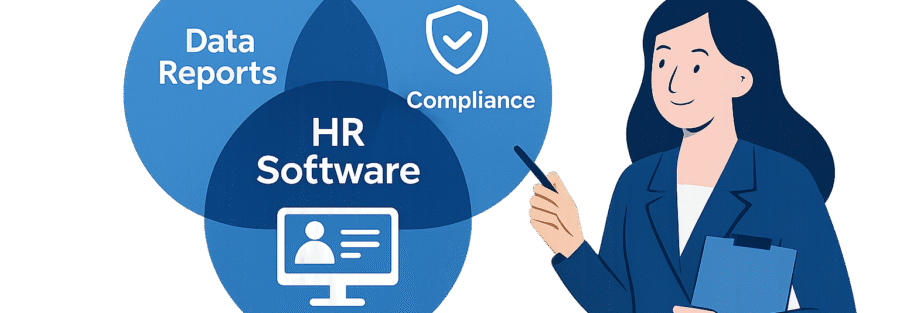Long ago, a general prepared for battle. His scouts brought him word of the enemy, but the reports were scattered, incomplete, and sometimes conflicting. Some scouts carried news of troop numbers, others spoke of terrain, and still others described morale, but there was no single map to see the whole. The general, though skilled, was blinded by fragments. He could not command effectively because he lacked clarity.
Sun Tzu warned:
“If you know the enemy and know yourself, you need not fear the result of a hundred battles.”
The general knew this, but without the ability to truly “know himself”, his army’s strength, weaknesses, fatigue, and loyalty, his strategy was guesswork.
Now imagine another general, whose camp had gathered every report, every detail of supply lines, every measure of morale, every strength and weakness of his troops, all translated into one living map. With this clarity, he could position his soldiers wisely, reinforce weak points, and ensure provisions reached where they were most needed. His people became his greatest advantage, not just his swords.
Connection to HR & People Data
In today’s organisations, people are the army, the force that drives success. But without clear insight into skills, engagement, turnover risks, or workforce trends, leaders are like the first general: surrounded by fragments, unable to see the whole.
HR Employee management system and people data act as the “living map,” bringing together performance metrics, wellbeing insights, and workforce planning into one coherent picture. They transform scattered fragments into actionable knowledge.
Just as Sun Tzu teaches that victory lies not in sheer numbers but in knowing one’s troops and using them wisely, modern organisations win not by headcount alone, but by understanding, valuing, and empowering their people through data-driven HR practices.
From Realisation to ROI
Many HR leaders begin with the decision to adopt an HRMS software, yet struggle to secure management buy-in. Even when approval is granted, the next challenge is shortlisting a solution that fits the organisation’s needs. Often, pricing becomes a barrier, what seems ideal ends up expensive and beyond budget. At this point, many settle for an employee management free software, treating it as a quick “tick in the box” rather than a strategic choice.
But recognising the importance of this investment is itself a milestone. Naturally, management will evaluate the value against the cost, focusing on ROI. And here lies another challenge: many HR leaders struggle to calculate ROI clearly enough to finalise the right employee management system.
Take a simple example. Consider leave and attendance. An employee attendance app not only tracks who is present but also delivers insights. It shows staffing gaps, highlights patterns in unplanned leaves, and allows proactive workload planning. It reveals employees who may be disengaged or disconnected. And critically, once an organisation crosses 20 employees, it helps ensure statutory compliance. In this way, even a basic function of an employee management systemdelivers measurable ROI.
A Checklist for Choosing Wisely
To avoid compromise and maximise value, HR leaders can follow a simple checklist:
- Identify your pain points.
- Speak to employees.
- Speak to stakeholders.
- Speak to your team.
- Write down issues, rate them by importance.
- Evaluate your current ecosystem.
- What software do you already use?
- Do you need integrations or will features overlap?
- What’s the effect on employees, stakeholders, and departments?
- Maximise product demos.
- Test how features solve your pain points.
- Involve end-users and stakeholders for a 360° perspective.
- Clarify onboarding and maintenance costs.
- Evaluate end-user experience, it will decide adoption success.
- Secure leadership buy-in.
- Present ROI, cost-benefit comparisons, and metrics.
- Be prepared for objections with data-backed answers.
Choosing the Right Partner
Today’s employee management systems market is crowded. Some vendors promise attractive employee management free software with features such as employee attendance app, leave, payroll, and performance management, usually up to a certain employee strength. These options are tempting for small organisations transitioning from Excel. But they often come with limits: once the threshold is crossed, organisations may face higher upgrade costs or reduced functionality under paid plans.
The smarter approach is long-term. If you plan for growth, choose a paid employee management system that scales with your journey. It should not just solve today’s pain points but anticipate future needs for at least three years. Switching systems later disrupts employees, drains resources, and diminishes ROI.
The best partner is one who aligns with your vision, customises to your needs, and provides clarity of cost and features. With this foresight, your employee management system becomes not just software, but a strategic asset that empowers your people and secures sustainable ROI.
Closing Thought
Sun Tzu reminds us:
“Victorious warriors win first and then go to war, while defeated warriors go to war first and then seek to win.”
Choosing the right employee management system is much the same. When leaders invest with foresight, clarity, and strategy, victory, through empowered people and stronger organisations, is already within reach.
For leaders comparing an employee management system, free software, or an employee attendance app, a 360-degree HR tech platform offers the complete, future-ready choice.








